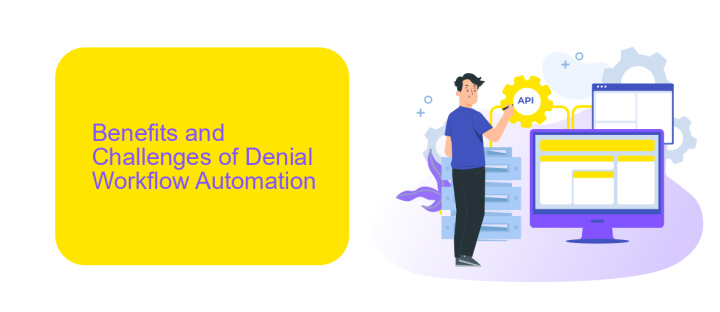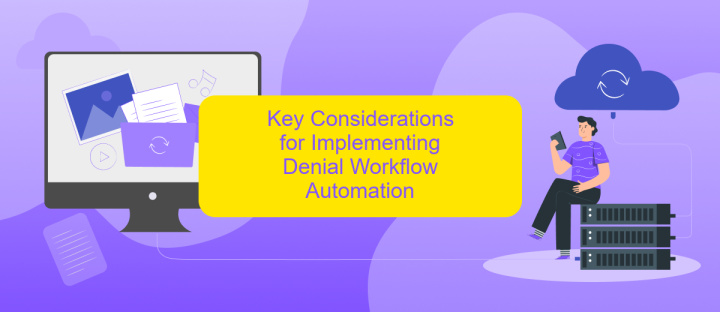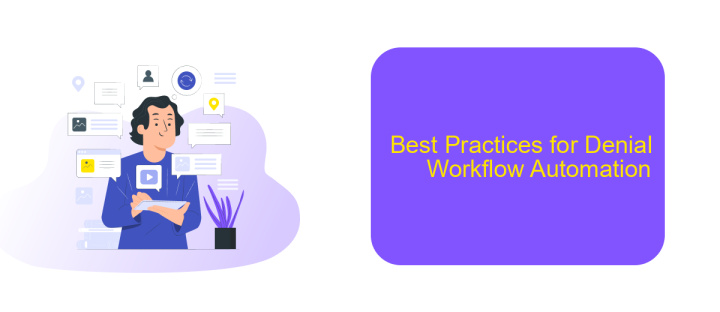Denial Workflow Automation
In the fast-paced world of healthcare, efficient denial management is crucial for maintaining financial stability and ensuring timely patient care. Denial Workflow Automation streamlines the process, minimizing manual intervention and reducing errors. By leveraging advanced technologies, healthcare providers can swiftly identify, address, and resolve claim denials, ultimately enhancing revenue cycle management and improving overall operational efficiency.
Introduction to Denial Workflow Automation
Denial Workflow Automation is an innovative approach designed to streamline the process of managing and resolving denied claims in various industries, particularly healthcare and insurance. By automating repetitive tasks, organizations can significantly reduce the time and effort required to address denials, improving overall efficiency and accuracy.
- Reduces manual intervention and human error
- Speeds up the resolution process
- Enhances data accuracy and consistency
- Improves compliance and reporting
- Facilitates better resource allocation
To achieve seamless integration and automation, services like ApiX-Drive can be utilized. ApiX-Drive allows for easy connection between various systems and applications, enabling real-time data exchange and workflow automation. This ensures that all relevant information is readily available, further enhancing the efficiency of the denial management process.
Benefits and Challenges of Denial Workflow Automation

Denial Workflow Automation offers numerous benefits, including increased efficiency and accuracy in handling denied claims. By automating the denial management process, healthcare providers can reduce manual errors, streamline workflows, and expedite the resolution of denied claims. This leads to faster reimbursements and improved cash flow. Additionally, automation tools can provide valuable insights and analytics, helping organizations identify recurring issues and implement corrective measures. Integrating services like ApiX-Drive can further enhance these benefits by seamlessly connecting various systems and automating data transfers, thus reducing the administrative burden on staff.
However, implementing Denial Workflow Automation also presents challenges. Initial setup can be complex and time-consuming, requiring significant investment in both technology and training. Ensuring data accuracy and system integration is crucial, as errors in these areas can lead to further complications. Moreover, resistance to change from staff accustomed to manual processes may hinder adoption. Despite these challenges, the long-term advantages of improved efficiency, reduced errors, and better financial outcomes make Denial Workflow Automation a worthwhile investment for healthcare organizations.
Key Considerations for Implementing Denial Workflow Automation

Implementing Denial Workflow Automation can significantly enhance the efficiency and accuracy of your denial management process. However, there are several key considerations to ensure a successful implementation.
- Integration Capabilities: Ensure that the automation tool can seamlessly integrate with your existing systems. Services like ApiX-Drive can facilitate these integrations, allowing for smooth data transfer and communication between platforms.
- Customization Options: The tool should offer customization to tailor the workflow according to your specific needs. This includes defining rules, triggers, and actions that align with your denial management policies.
- Data Security: Protecting sensitive information is crucial. Make sure the automation solution complies with industry standards and regulations to safeguard patient data and other confidential information.
- Scalability: Choose a solution that can grow with your organization. As your volume of claims increases, the system should be able to handle the additional load without compromising performance.
- User Training and Support: Adequate training and support are essential for a smooth transition. Ensure that the provider offers comprehensive training sessions and ongoing support to help your team adapt to the new system.
By carefully considering these factors, you can implement a denial workflow automation system that not only streamlines your processes but also enhances overall operational efficiency.
Best Practices for Denial Workflow Automation

Implementing denial workflow automation can significantly enhance the efficiency and accuracy of your processes. To achieve the best results, it's crucial to follow some best practices that ensure smooth operation and integration.
Firstly, ensure that your system is capable of seamless integration with other essential tools and services. This will streamline the data flow and reduce manual intervention. For instance, using services like ApiX-Drive can help automate integrations effortlessly, providing a cohesive workflow.
- Regularly update and maintain your automation rules to adapt to changing requirements.
- Monitor and analyze the performance of your automated workflows to identify and rectify any issues promptly.
- Train your team to understand and utilize the automation tools effectively.
- Ensure data security and compliance with relevant regulations.
By adhering to these best practices, you can optimize your denial workflow automation, resulting in improved productivity and reduced error rates. Remember, continuous improvement and adaptation are key to maintaining an efficient automated system.
- Automate the work of an online store or landing
- Empower through integration
- Don't spend money on programmers and integrators
- Save time by automating routine tasks
The Future of Denial Workflow Automation
The future of denial workflow automation is poised to revolutionize how organizations handle claim denials, enhancing efficiency and accuracy. With advancements in artificial intelligence and machine learning, automated systems will become increasingly adept at identifying patterns and predicting denials before they occur. This proactive approach will enable healthcare providers and insurance companies to address potential issues in real-time, reducing the number of denied claims and improving overall revenue cycle management.
Integration with other systems and services will play a crucial role in the evolution of denial workflow automation. Platforms like ApiX-Drive will facilitate seamless integration between various software applications, allowing for a more cohesive and streamlined workflow. By automating data transfer and communication between different systems, ApiX-Drive will help organizations save time and reduce errors, ultimately leading to more efficient denial management processes. As technology continues to advance, the capabilities of denial workflow automation will expand, offering even more sophisticated tools and solutions to tackle the complexities of claim denials.
FAQ
What is Denial Workflow Automation?
How can Denial Workflow Automation benefit my organization?
What types of denial reasons can be managed through automation?
How do I integrate Denial Workflow Automation into my existing systems?
Is Denial Workflow Automation customizable to fit specific organizational needs?
Strive to take your business to the next level, achieve your goals faster and more efficiently? Apix-Drive is your reliable assistant for these tasks. An online service and application connector will help you automate key business processes and get rid of the routine. You and your employees will free up time for important core tasks. Try Apix-Drive features for free to see the effectiveness of the online connector for yourself.


